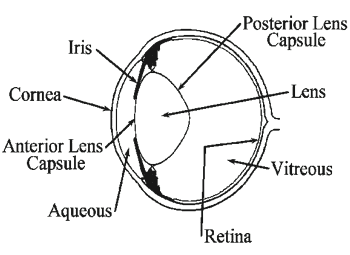 We cannot stress enough that problems with the eye are one of those ailments which must be checked by a vet immediately.
We cannot stress enough that problems with the eye are one of those ailments which must be checked by a vet immediately.
If your horse’s eye/s show the following symptoms, we strongly urge you to call a vet as soon as possible:
- weeping, tears that are clear
- discharge of any other colour, or consistency
- swelling of or around the eye
- sensitivity to light or touch
- blinking strangley, or keeping the eye closed
- white or other coloured spots/patches on the eye/cloudiness
- Lines or marks across the eye
- bleeding from the eye
- redness in or around the eye
- constricted/odd-looking pupils
Eyes are a very delicate organ. Self medicating with what might seem like an innocuous cream can do more harm than good, and can result in the eye becoming infected or even rupturing. When the eye ruptures in many cases it has to be surgically removed.
To diagnose an eye complaint your vet would examine the eye with a light. They usually would then stain it with fluroscein to determine the severity and depth of the ulcer. If the vet fears that the ulcer is infected they make take a swab to culture.
Depending on the diagnosis and severity, your vet may treat with a number of prescription eye ointments, antibiotics, antinflamatories, and even in some severe cases, eye surgery. To try and avoid such a costly and stressful outcome, we always advise to get a vet at the first sign of a problem with the eye.
There are many different eye problems; we’ll cover a few of the most common below:
Corneal Ulcers
These are by far one of the most common ailments of the eye we see in our practice. Ulceration occurs when the corneal layers are damaged (the cornea is the front, clear part of the eyeball). Many severe eye conditions arise secondary to this first condition, hence it is vital to seek veterinary treatment at the first sign of a problem.
 Conjunctivitis
Conjunctivitis
Inflammation and/or infection of the conjunctiva (soft tissues that surround the eye). Can occur from dust, allergy, or infection. This can progress or cause self-trauma, leading to other problems.
Uveitis
This means an inflammation of the uveal tract or front portion of the eye. This condition can be recurrent, and forgoing treatment can lead to blindness.
Stromal Abscess
 This is a bacterial or fungal infection in the stroma or body of the cornea. This is usually but not always as a result of an untreated ulcer, but can occur due to foreign bodies like thorns or splinters, and can also occur spontaneously via the blood stream.
This is a bacterial or fungal infection in the stroma or body of the cornea. This is usually but not always as a result of an untreated ulcer, but can occur due to foreign bodies like thorns or splinters, and can also occur spontaneously via the blood stream.
Bulus Keratopaghy
This involves severe swelling, sometimes due to fluid accumulation. It looks like a burst blister on the eye. If untreated this can lead to rupture of the eye, indeed this unfortunately occurs sometimes despite treatment. Veterinary assessment is VITAL.
Hypopyon
This occurs when there is inflammatory debris (pus) in the anterior chamber. It is often the result of an infected ulcer.
Cancer
Several types of cancer occur in and around the eye. Squamous Cell Carcinoma is quite common in eyelids, and occurs often in appaloosas, paints, as well as any horses with unpigmented skin around the eye; unpigmented 3rd eyelids; or eyeballs (around the edge of the coloured part). They can also occur on the eyeball itself. If treated early these can have a reasonable prognosis.
Haebronema
Usually transmitted via flies, a habronema is a worm internally deposited, sometimes in the eye. The habronema in the eye may present as conjunctivitis, and requires an expert vet to diagnose. Habronema is usually prevented, as well as treated, via using a ivermectin wormer.
Glaucoma
This is when there is increased pressure in the eye, but it doesn’t occur very often in horses thankfully.
There are many more ophthalmic conditions than those we’ve listed here. Many of the above conditions can lead to blindness if left untreated. Due to the vast array and degree of problems that can be found in eyes, it is always best to get an experienced equine vet as quickly as possible.
Image 1 Source - Image 2 Source - Image 3 Source -









